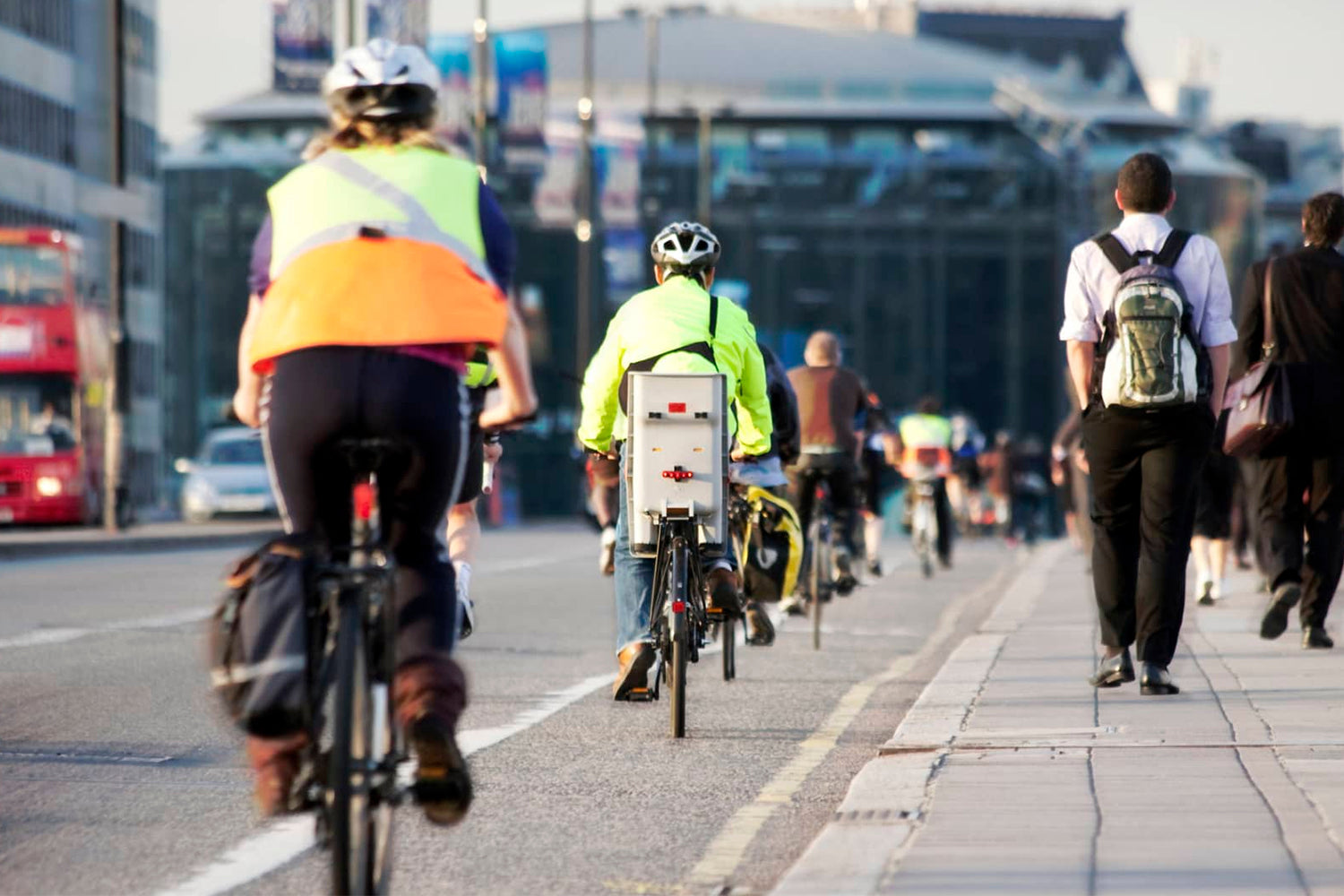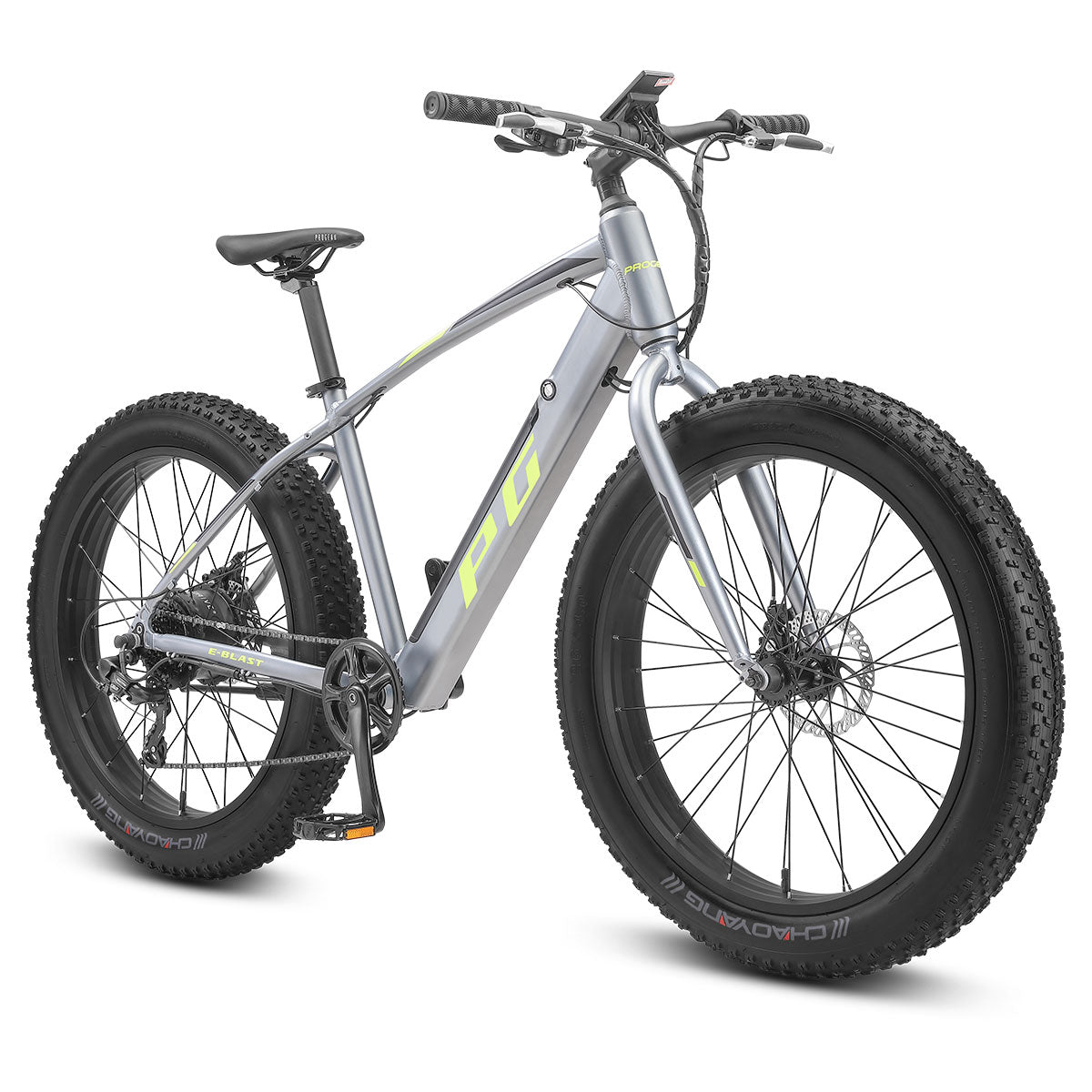
Bike brakes work by applying some type of brake pad to the wheel of the bike, creating friction on the surface and working to slow the wheels down. There are different mechanisms through which this can occur which we will explore below.
Disc brakes are widely considered the most effective and reliable type of brake. They come in two types: mechanical and hydraulic. Mechanical disc brakes work by pulling on a cable, which in turn activates the brake pads. Hydraulic disc brakes work by using fluid to press the pads against the rotor. Hydraulic brakes are much more efficient than mechanical brakes, providing more power, control and consistency.

Disc brakes will provide excellent stopping power, even in wet conditions, and are easy to maintain. They are most used in mountain bikes and road/commuter bikes.
Rim brakes come in two types: caliper and V-brakes. Caliper rim brakes are the most basic type of brake and are found in cheaper bikes. They work by squeezing the rim of the wheel between two brake pads, causing friction and slowing down the bike. V-brakes are similar to caliper rim brakes but provide more stopping power. They are commonly found on BMX bikes and hybrid bikes.

Coaster brakes work by engaging the brake when pedalling in reverse. This can take some getting used to if you've never used them before, but become very intuitive after some practice. Most coaster brakes come with lever based front brakes and a rear brake. Coaster rear brakes are completely sealed, which created very little maintenance. This type of brake is very common in kids' bikes and cruisers, as they make for a very user-friendly bike without much hassle.

Disc brakes provide the most stopping power and are reliable in all conditions, such as through rain or mud. This is because disc brakes have slotted rotors that help to push water through without getting stuck.
They also require less maintenance than other types of brakes. However, they are more expensive than other types of brakes and can be harder to replace.
Caliper rim brakes are the most basic type of brake and are found in cheaper bikes. They are easy to replace and maintain, but they provide less stopping power than other types of brakes.
V-brakes are like caliper rim brakes but provide more stopping power. They are commonly found on entry-level mountain bikes and hybrid bikes. They are easy to maintain and replace, but they can be less effective in wet conditions. This is due to the fact that most bike rims have a machined, smooth surface that doesn't come with ridges or slots to displace water like a disc brake rotor does. As such, water build-up on the rim surface can reduce the effectiveness of V-Brakes, creating some lag or inconsistency in wet conditions.
Coaster brakes don't provide as much stopping power, and can struggle with braking at high speeds. They provide a good, user-friendly system that's better suited to younger cyclists and more simple rides.
Maintaining your brakes is essential to ensure they are working effectively and safely. Here are some tips for maintaining your bike brakes.
The first thing is to get into the habit of cleaning and wiping down your bike on a regular basis. Ensure that you're cleaning the brake rotors or rims to remove dirt, grime and other debris. This will reduce the likelihood of mechanical problems and will generally keep your bike in top performance shapes. Next, make sure to check your brake pads regularly for wear and tear. You'll need to replace them if they're worn down to the indicator line or at less than 3mm. Check that your brake levers are not loose and are working properly, and regularly check on your bike brake cable and housing. These will need to be replaced if they are damaged or worn. Lastly, inspect that your brake calipers are properly aligned with your wheel rims and rotors.

The type of brakes you choose will depend on your riding style, your budget, and your personal preferences. If you're looking for the most effective and reliable type of brake, hydraulic disc brakes are definitely a top pick. While they can be more expensive and require additional maintenance, they provide excellent stopping power, and are reliable in all conditions. If you're on a budget, cable disc brakes can be an excellent alternative, and if you're really thinning down the budget, rim brakes such as caliper or V-brakes are acceptable in regular street riding, with the added bonus of both requiring less maintenance.
If you have any questions on the best bike for your ride, feel free to contact us, either by phone, email or in person at our Broadmeadows warehouse, and a member of our friendly team will be happy to help you find the right fit.






















1 comment
Hi, I have the progear trail and want to update the mechanical brakes to hydraulic brakes, do you sell these and are they just bolt on to replace the old ones?